Buried underneath the hillside, alongside Mt Gibraltar between Mittagong and Bowral in New South Wales, Australia, lies a disused railway tunnel. This single track tunnel was built in 1866 and used up until 1919 when a new double track tunnel was built alongside. The single railway tunnel remained unused until in the 1950’s when it became one of the first cultivated mushroom farms in Australia.

In 1987 Dr Noel Arrold, a microbiologist, took over the tunnel and proceeded to develop new mushroom varieties for the Australian market. The first variety grown was the Swiss Brown mushroom, followed by the Exotic Asian varieties – Shiitake, Oyster, Shimejii and Wood Ear. These mushrooms thrive in the cool, damp and dimly lit environment of the tunnel which resembles the conditions that occur in the mountainous forests of China, Japan and Korea where these mushrooms occur naturally.
The tunnel for which these mushrooms have been so carefully developed is 650 metres long and about 30 metres deep. Buried under solid rock and deprived of the New South Wales sunshine, the temperature holds at a steady 15º Celsius. The fluorescent lights flick on at 5:30 a.m. every day, switching off again exactly 12 hours later.

Entrance to the mushroom tunnel
Dr. Arrold keeps his mushroom cultures in test-tubes filled with boiled potato and agar, and initially incubates the spawn on rye or wheat grains in clear plastic bags sealed with sponge anti-mould filters before transferring it to jars, black bin bags, or plastic-wrapped logs. Dr. Arrold came up with the simple but clever idea of growing mushrooms in black bin bags with holes cut in them. Previously, mushrooms were typically grown inside clear plastic bags. The equal exposure to light meant that the mushrooms fruited all over, which made it harder to harvest without missing some.
“Our farm produces approximately 1,500kg of mushrooms a week, small compared to white button mushroom farms, which produce 20 tonnes a week. But ours is a high-value crop. Exotic mushrooms are attractive because the production process is chemical-free, low-energy and uses waste material', says Dr. Arrold.
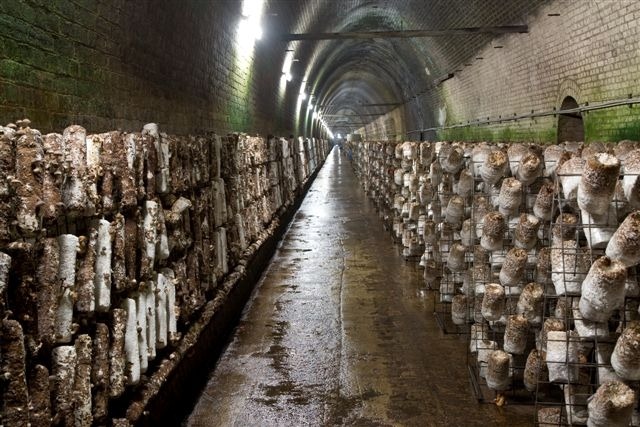
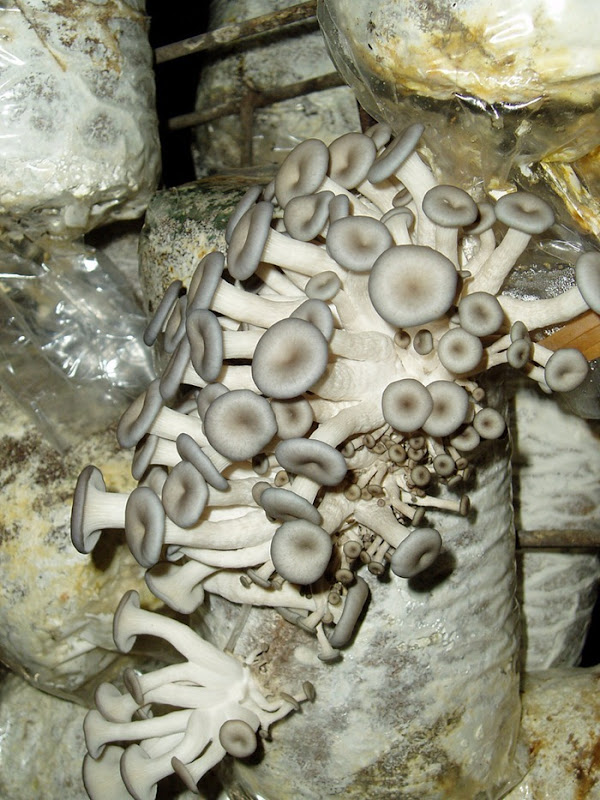
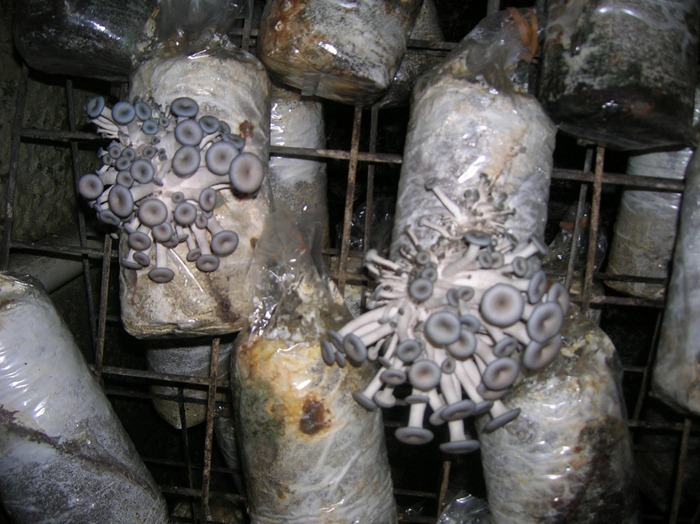
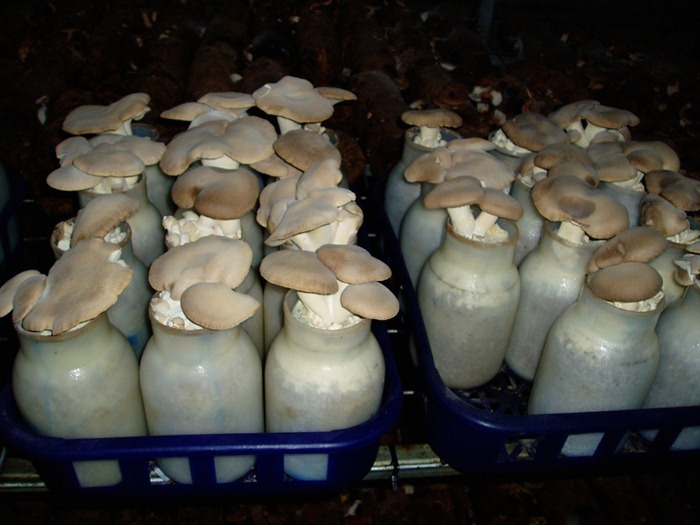
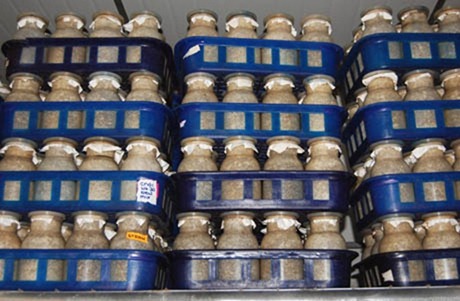
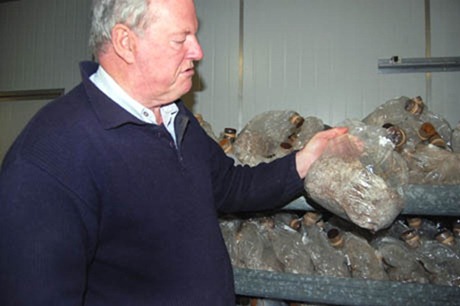
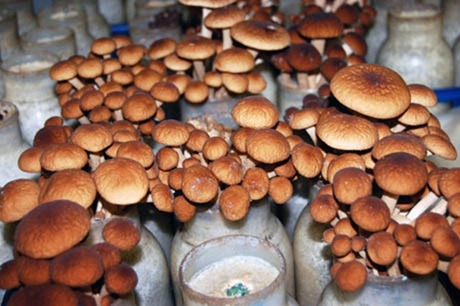
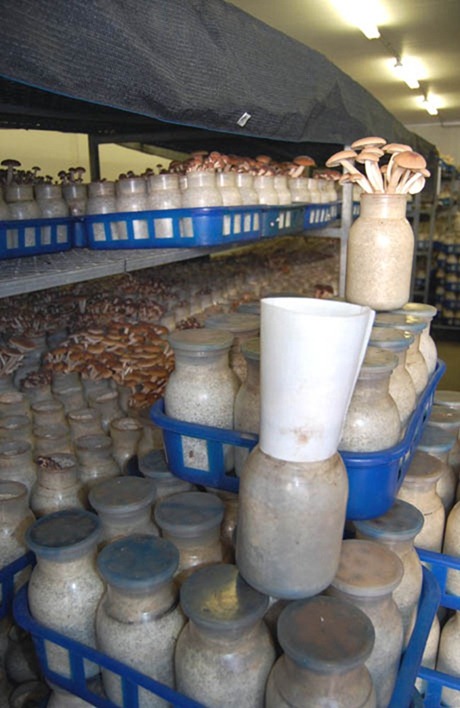
Li-Sun Mushrooms Farm Homepage
For photos of the mushrooms visit this Flickr gallery.
[via BLDGBLOG]



Comments
Post a Comment